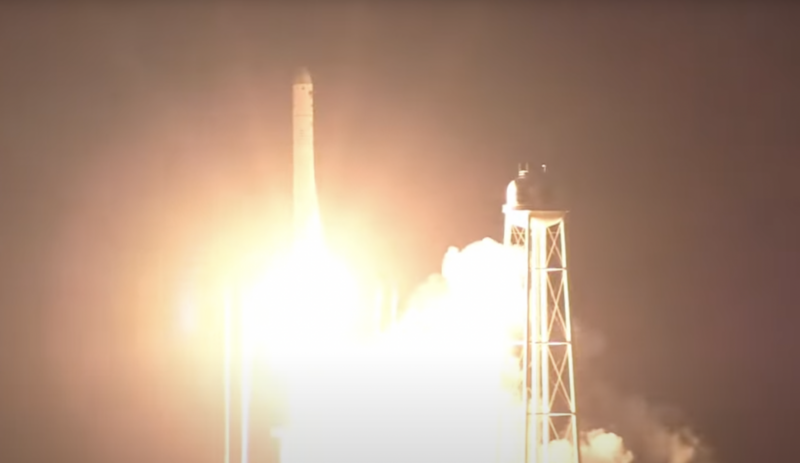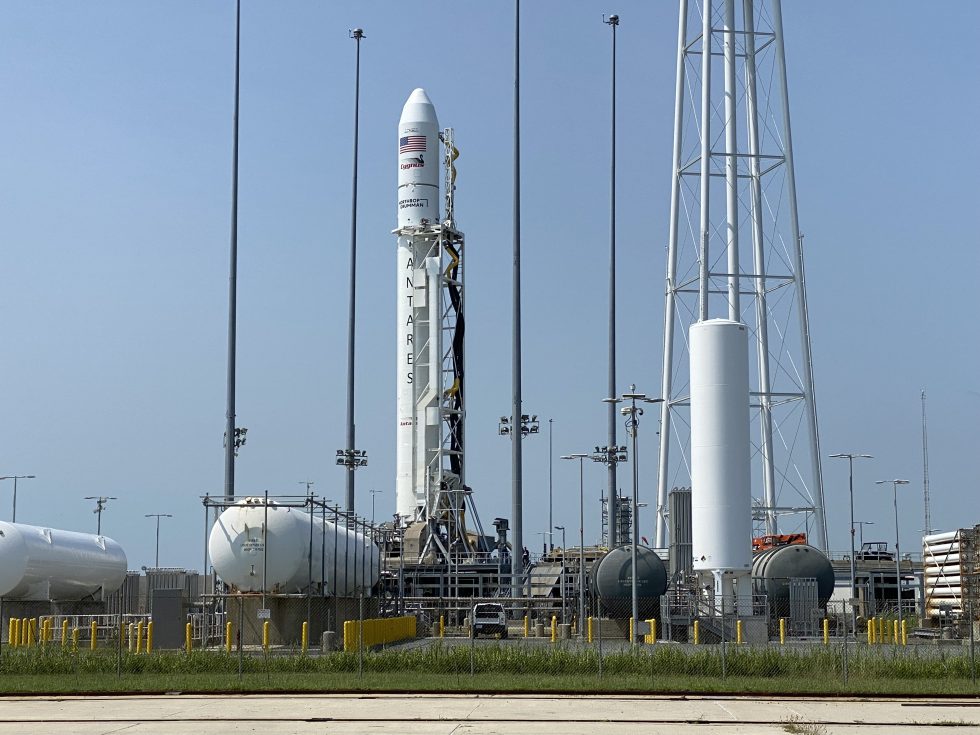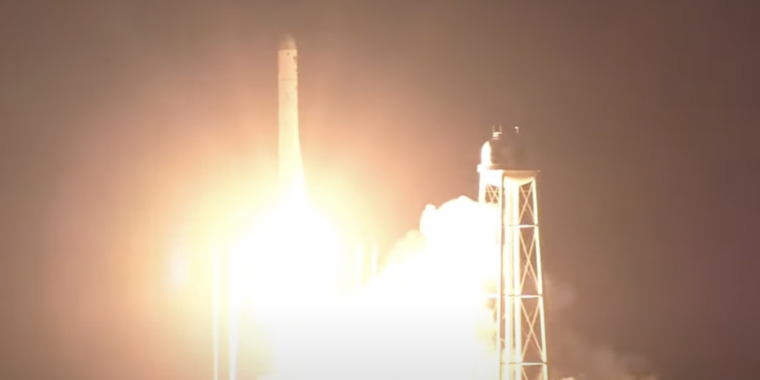
NASA
WALLOPS ISLAND, Va.—I had been told that rocket launches are a physical experience, that the carefully controlled explosions that send payloads to space create waves of sound intense enough to be felt from over a mile away. But my first close-up experience with a launch involved the relatively small Electron rocket, and that left me wondering about whether these reports might be a bit exaggerated.
Tuesday’s launch of an Antares rocket from Wallops Island made it clear there was no exaggeration. The two RD-181 engines that sent a Cygnus capsule toward a rendezvous with the International Space Station (more on those below) created a crackling noise that was at once both high-pitched and deep enough that you could feel their vibrations in your chest. The metal bleachers set up for the press rattled in sympathy.
But all that violence came as part of a completely routine launch. While there was a small delay—just long enough to allow an instant of worry—between the countdown hitting zero and flames appearing, the rocket performed exactly as expected, putting Cygnus on course for an ISS rendezvous on Friday.
The only negative was from the viewing perspective, as a high layer of overcast meant that the show ended with the main engine cutoff; it wasn’t possible to watch the second stage ignite. (The intense mosquito presence from the nearby salt marshes was also a negative but had nothing to do with the rocket.)
Under normal circumstances, the flawless launch would just be another iteration of a successful program. But these are most certainly not normal circumstances. So, despite the success, Tuesday’s launch represents the end of eras both large and small. On the small side, Antares will go on hiatus for its second major redesign and repowering before reappearing with nothing but US-built hardware. The larger end of an era comes from a curtain closing on a time where the future of space flight looked something like this version of Antares.
That didn’t last
The Antares booster that went to space on Tuesday is an odd hybrid that perfectly represents the potential of an era where spaceflight would be centered on US-Russian cooperation and perfectly symbolizes how thoroughly dead that era is. You can read in detail about the whole complicated saga, but the key points are this: This version of Antares has an American payload and second stage that sit on top of a first stage that marries a Ukrainian-built structure to Russian engines.
It may seem difficult to imagine, but there was a time when this level of cooperation was expected to be the future of space travel. With the Cold War wound down, Russia held out the promise of cheap, reliable access to orbit, something the US was struggling with in the Shuttle era. It also had experience with long-term orbital missions and was willing to share that expertise with the West via the ISS. Meanwhile, Western companies and governments had the budgets to keep Russian experts employed as the country struggled to adapt to a market economy.
A few decades back, this symbiotic relationship appeared to be the future of crewed space exploration.
Today’s launch is a stark reminder of just how badly that has worked out. The Ukrainian company that assembled Antares’ first stage is based in Dnipro, which has been regularly targeted by Russian missiles. No more are expected to be built, and Northrop Grumman is developing a replacement based on entirely new engines developed by the US startup Firefly Aerospace. Cygnus launches will use US-built Falcon 9s until that replacement is ready.

John Timmer
The launch of the last of the Ukrainian-built boosters also brings a close to the era of cooperation.
Tuesday’s launch won’t be the last rocket from the US powered by Russian engines. There are enough already in the US to equip the remaining Atlas V launches, which will likely continue until late in the decade. But it’s difficult to imagine any US company betting its launch capabilities on the availability of anything from Russia in the future. That’s partly because it’s difficult to see the country changing enough to escape sanctions, much less be a reliable partner again. But there also isn’t a need for it. A number of US-based companies like Firefly are building modern engines that eliminate the need for Russian hardware. When the Atlas launches are done, there won’t be any need to make political compromises to get ahold of an engine.
Cygnus is on its way to the last site of ongoing cooperation, the ISS. But NASA is already starting to plan for the station reaching the end of its finite life around the end of the decade. In the meantime, the ISS will operate via a frosty tolerance despite sporadic Russian posturing, a situation only made somewhat easier by the firing of the former head of Roscosmos, the mercurial Dmitri Rogozin. The US has invited Russia to join it in its next major international crewed project, Artemis, but the offer was declined.
Even here, Tuesday’s launch is significant in that the Cygnus spacecraft helps reduce NASA’s reliance on Russian vehicles for boosting the altitude of the ISS.
That’s a lot of symbolic baggage for one mission to carry. Fortunately, symbolism doesn’t add to the stresses experienced by the hardware on its way to orbit. So the orbital trip went off without a hitch, its performance letting everybody know that something really has been lost.

